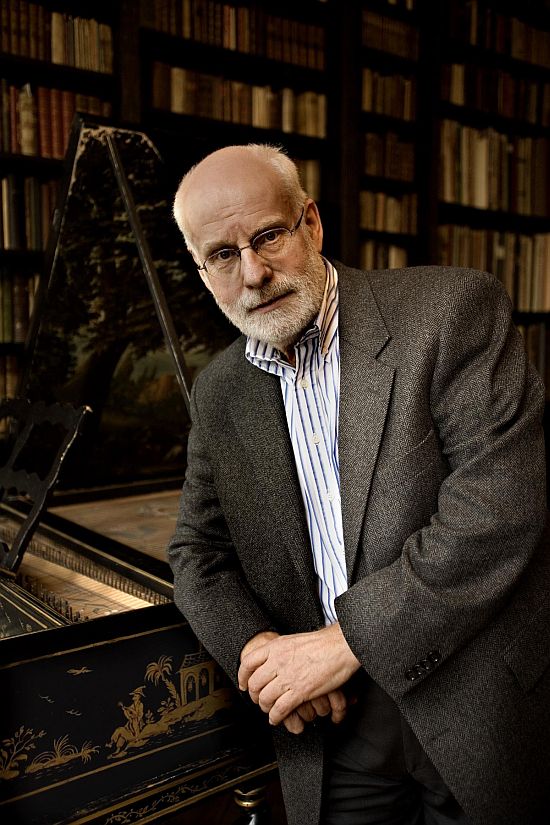Bach: Teresa Wakim (Soprano), Bogna Batosz (Alto), Tilman Lichdi (Tenor), Klaus Mertens (Bass-baritone) Amsterdam Baroque Orchestra and Choir, Ton Koopman (conductor), Carnegie Hall, New York, 15.3.2012 (SSM) Bach: Du Hirte Israel, höre,
Cantata BWV 104
Magnificat in D major BWV 243
Herz und Mund und Tat und Leben, Cantata BWV 147

At the time the Amsterdam Baroque Orchestra was founded, there were only a handful of early music performance groups and they were considered radical in all respects. One of the complaints about the early music groups’ playing was that it was too cold. This would naturally be the case since the instruments used to perform are originals or copies of originals that lack in richness what they gain in timbre. All the instruments are played without vibrato, a practice that reduces, particularly in the strings, the warmth we have come to expect from contemporary instruments. At the same time what is gained by the absence of vibrato is a clarity of line.
As often happens when there is a reaction against the reigning style in art, it initially triggers an overreaction. These early groups were fairly brash about what they felt was the “true” way of playing early music, and armed with little more than an ideal of a purer music, they made mistakes on every level. Issues over vibrato, debates as to what the correct tuning should be (somewhere between A-400hz and A-430hz), equal temperament, notes inégales, valveless, vented or ventless brass, Baroque bowing methods and types of bows: it took decades of scholarly research to come up with some consensus on how this music should be performed. Much of the unified front of the early historically informed performance groups splintered as newer discoveries were made.
The one-voice-per-part (OVPP) movement of Joshua Rifkin became the basic structure of groups directed by Andrew Parrott, John Butt, Paul McCreesh and others. Nicholas Harnoncourt’s set of the complete Bach cantatas used only boy singers in its chorus and as high soprano soloists. Tempos and styles often varied by country: Italian Baroque groups were speed demons, French groups heavily into ornamentation and Northern Europeans tended toward more moderate tempos.
Joshua Rifkin defended the OVPP rule by ignoring the first-hand evidence of Bach’s own statements, preferring to use the evidence of Bach’s contemporaries such as Telemann whose manuscript performance scores clearly indicated OVPP. Ton Koopman has held to a moderate approach through all this in-fighting from the beginning. Sticking closely to the few extant Bach documents such as the Entwurfof 1730 where Bach requested that the Thomaskirche provide him with 36 members for the chorus (I counted 25 for this performance) and 24 instrumentalists, Koopman seems closest to getting it right.
When tempos are indicated there is less room for misconstruing the pace, but none are indicated here in this score. At the opening of Koopman’s concert, the chorus performance of Du Hirte Israel, höre, struck me as a bit slow. Digging up an old recording of the 104th cantata done by Fritz Werner in the 1950’s, I was in for a surprise: Werner takes twice as long as Koopman with the opening chorus
[wpaudio url=”https://www.seenandheard-international.com/wp-content/uploads/2012/03/BWV104-1.mp3″ text=”Fritz Werner Opening Chorus Bach BWV 104″ dl=”0″]
[wpaudio url=”https://www.seenandheard-international.com/wp-content/uploads/2012/03/BWV104-2.mp3″ text=”Ton Koopman Opening Chorus Bach BWV 104″ dl=”0″]
Throughout this performance the soloists concentrated on making sure every word was clearly enunciated. This complemented the conductor whose focus also seemed to be on making sure every note was heard. The balancing of the various groups, so that one group wouldn’t drown out another, was exemplary. Tenor Tilman Lichdi and soprano Teresa Wakim gave the most intense performances. Wakim’s pure white voice informed her arias with a silvery brilliance lacking in Bogna Batosz’s arias. The ubiquitous Klaus Martens disappointed by declaiming the wonderful aria “Beglückte Herde, Jesu Schafe” with its poignant double oboe d’amore accompaniment.
The Magnificat is one of Bach’s masterpieces. It sounds fresh on every hearing, and this performance was no exception. The musicians and chorus soared in both the opening and closing choruses, and the intervening arias showed the range of color the orchestra was capable of producing. Not to denigrate in any way the trumpet players who performed with bravura, but they lacked the éclat that can only come from ventless instruments.
The concert concluded with Cantata BWV 147 Herz und Mund und Tat und Leben. This cantata is known mostly for its great chorale, “Bleibet Meine Freude”, sung twice in different stanzas. But the real gem is the aria with solo violin and continuo, Bereite dir, Jesu, noch itzo die Bahntouchingly sung by Teresa Wakim and elegantly played by concertmaster Catherine Manson. It is an aria reminiscent of the centerpiece of Bach’s St. Matthew Passion, Erbarme Dich.
As a most appropriate response to the applause, Koopman performed again the Gloria from the Magnificat as an encore.
Stan Metzger